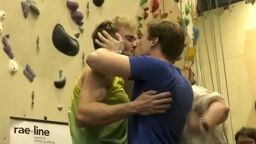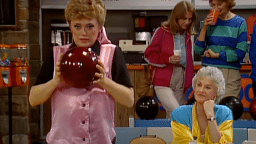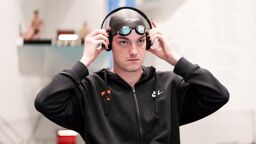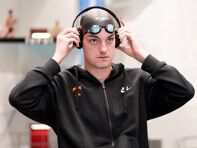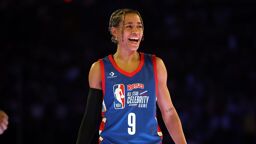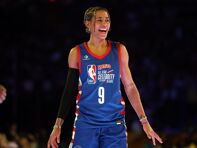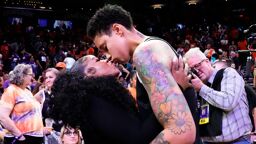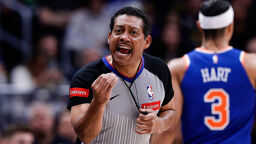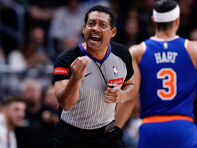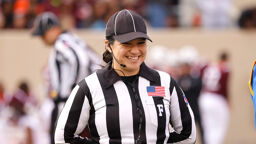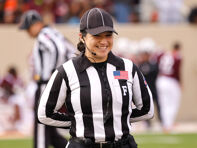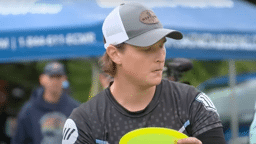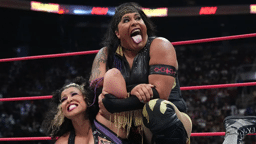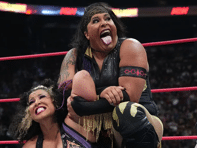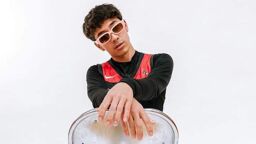 As the Winter Olympics fade into history, we can’t leave them without celebrating Corinne Hunt, the lesbian First Nation artist who designed those unusual medals. I’ve been watching the Olympics on TV since the 1960s, and can’t remember another Games with medals that stood out so sharply for their powerful — if controversial — presence.
As the Winter Olympics fade into history, we can’t leave them without celebrating Corinne Hunt, the lesbian First Nation artist who designed those unusual medals. I’ve been watching the Olympics on TV since the 1960s, and can’t remember another Games with medals that stood out so sharply for their powerful — if controversial — presence.
 As the Winter Olympics fade into history, we can’t leave them without celebrating Corinne Hunt, the lesbian First Nation artist who designed those unusual medals. I’ve been watching the Olympics on TV since the 1960s, and can’t remember another Games with medals that stood out so sharply for their powerful — if controversial — presence.
As the Winter Olympics fade into history, we can’t leave them without celebrating Corinne Hunt, the lesbian First Nation artist who designed those unusual medals. I’ve been watching the Olympics on TV since the 1960s, and can’t remember another Games with medals that stood out so sharply for their powerful — if controversial — presence.
Hunt grew up in a native community at Alert Bay on the north end of Vancouver Island. "I'm Komoyue tribe," she says. Pacific Northwest peoples have an ancient tradition of metalworking, so Hunt fell in love with metals at a young age, inspired by an uncle who was a famous jeweler. Since 1985 she has achieved international prominence as a jeweler and contemporary furniture designer. She specializes in luminous metal creations that marry ancient native symbols with space-age metals technology.
In a recent interview with film producer Morris Chapdelaine on BigGayMovie.com, Hunt was a picture of traditional/contemporary — she wore a spikey boyish 'do and a black-and-white native weaving wrapped around her neck. She shared that she came out when she was 16 years old. "That was in 1976. Yeah!"
Hunt smiled broadly as she added, "As long as you're very comfortable with who you are, it can be a very positive influence."
In 2008, when the Vancouver Olympic Committee (VANOC) announced its competition for medal design, 48 artists from all over the world jumped at the chance. Hunt's imaginative concept started with a panel covered in traditional images of a swirling, stylized orca. Hunt saw this animal as expressing the power, speed and strength of Olympic athletes. The round of each medal would be lifted, cookie-cutter fashion, from a different spot on the panel. So each medal would be unique, with a different design. But, like a piece of a puzzle, each medal would still remain a dynamic part of the whole.
VANOC asked Hunt to collaborate with another competitor, industrial designer Omer Arbel. Their final brainstorm: Unlike most Olympic medals, which are flat like conventional coins, Vancouver's medals would be wavy, expressing the waters and mountains of the region. The medals jury was evidently bowled over by this high-tech concept.
Next, Hunt and Omer Arbel collaborated with the Royal Canadian Mint. Gold, silver and copper were supplied by the Vancouver firm Teck Resources Limited, who recycles from electronic waste (circuitboards, etc.). Copper was used for the "bronze" medals to make sure they didn't look too much like the gold medals. Each of the 1014 Olympic medals was struck 6 times to get the wave into it. Then it was engraved by a laser process with its chosen whale design.
A similar series, using a raven design, was done for the upcoming Paralympic Games.
Admittedly, when the Vancouver medals were unveiled, they weren't popular with everybody. Online comments ranged from "nice," "stunning" and "beautiful," to "they look like microwaved frisbees." Some fans were offended that the medals bore a native symbol instead of the Canadian maple leaf.
Commenters took swipes at past medals too. The Beijing 2008 medals were villified as looking like hockey pucks. The ones given out at Turin 2006 were ridiculed as resembling CDs. One website did a poll on the "nicest" medals. Nagano came in 1st with 41% of the vote, and Vancouver 2nd with 25% of the vote. Going by the comments, Hunt's designs clearly have their admirers as well.
The sports bug has evidently bitten Hunt. In the Chapdelaine interview, she confessed, "I'd like to design some skateboards and snowboards. Yeah!"
Whatever else she does, Hunt will go down in history as the creator of those 1014 Olympic medals. During the Games, her creations were on camera for thousands of times — incredible exposure for an artist, that no amount of ad dollars could buy. Their unique look — the way their wavy surfaces caught the light like moving water — left an indelible impression on many viewers. With their fusion of ancient and modern, those Vancouver medals express the old/new history of the Games, and the spirit of this out artist herself. And U.S. athletes brought home a whole pile of them.



